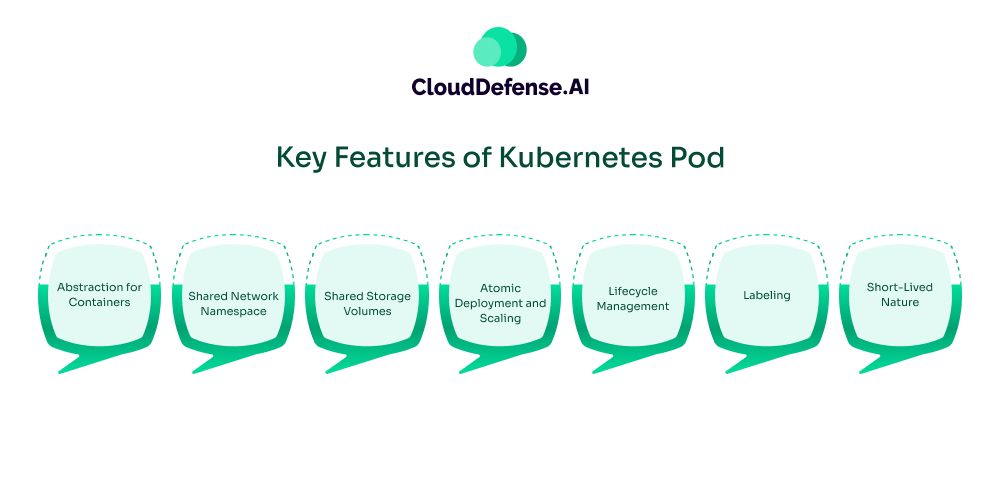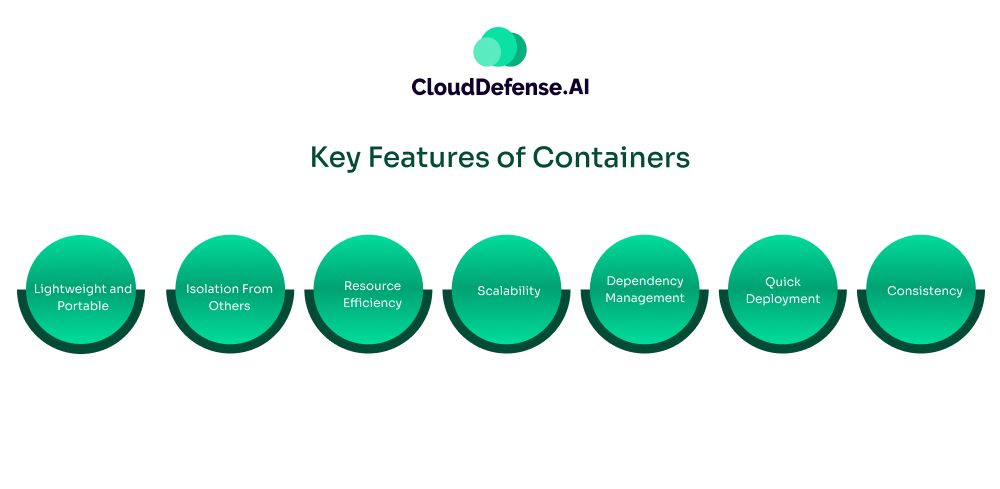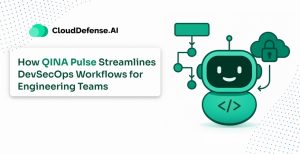Organizations diving into Kubernetes and container orchestration for application development often get confused between pods and containers. This not only creates a roadblock for developers but also confuses security professionals and system administrators when adapting to Kubernetes.
If you are deciding to utilize Kubernetes, it is essential to understand the key differences between pod and container in Kubernetes.
Through this article, we will help you understand the nuances of pod vs. container in Kubernetes and provide a detailed understanding of each of the terms. Understanding the difference will help you to reap all the benefits of Kubernetes and accelerate your application development.
Let’s get started with understanding the basic terms first:
What is Pod in Kubernetes?
A pod in Kubernetes serves as the vital building block, representing a single instance of a specific running process in the cluster. Pods are the simplest and smallest deployable unit in a cluster which are created when you need to run a single container.
A unique capability of pods is that they can include more than one container, which makes them different from single containers managed by Docker.
Containers inside the same pod not only share the same IP address and port space but also the same storage volume. Due to the shared environment, it enables the containers to communicate with each other and perform data exchange using any local host.
Moreover, the seamless communication facilitates effortless building of microservices and other distributed systems. It also serves as the fundamental unit of a Kubernetes application that developers can customize according to their requirement. Many developers consider pod as a logical wrapper entity for a container which also provides specification or mechanism on running the container.
Key Features of Kubernetes Pod

When it comes to an understanding of what a pod and container in Kubernetes are, it is imperative to know key features. Here, we mention some of the vital features that define Kubernetes pod:
Abstraction for Containers
One of the primary features of pod is its ability to offer an abstraction layer that is utilized for including one or more containers. The group of containers in a single pod allows them to share the same network, storage volume and resources, and work as a single unit.
Shared Network Namespace
Another key feature that defines a pod is the shared network namespace that facilitates any communication between the containers in a pod. The containers communicate with each other using a local host that ultimately helps in streamlining the application deployment process.
Shared Storage Volumes
Pods facilitate containers to share the same storage volume, which helps streamline the collaboration between the containers. Besides, the accessibility of shared storage volume enables containers to access data sharing.
Atomic Deployment and Scaling
A unique feature of pods in Kubernetes is that they are treated as an atomic unit when it comes to deployment and scaling. Whenever a container in a pod is scaled, all the other containers in the pod are scaled together, and similar things happen during deployment.
Lifecycle Management
Kubernetes are responsible for lifecycle management of the pods where they undergo phases like Running, Succeeded, Terminated, Pending, and Unknown.
Throughout the lifecycle, it is its responsibility to maintain the specific state of the pod. In addition, Kubernetes also improves the container’s health by facilitating liveness and readiness probes.
Labeling
A great feature of pods is that they can be labeled, and this label facilitates easy identification as well as grouping purposes. Kubernetes like services and deployment often use these labels for proper identification processes.
Short-Lived Nature
Pods are designed to be short-lived and disposable, making them extremely easy to utilize. They have a very short life span, and this is why they are stored externally.
What is a Container in Kubernetes?
Containers are lightweight and executable software packages that encapsulate everything needed by software to run smoothly. It is a stand-alone package that includes code, libraries, system tools, and runtime. In layman’s terms, it can be described as a package with the required program to execute and all the associated dependencies.
Containers are built from images, which provide an isolated and reproducible environment for the program to run smoothly across different computing environments. What these packages do is: they encapsulate all the dependencies of software within it, facilitating easy deployment and complete portability.
Most importantly, it allows developers to build and deliver containerized applications with their dependencies and ensure the application runs consistently and independently. This factor has completely revolutionized the way modern software is packaged, executed, and distributed.
Besides a web application, a container can also be a database or backend service. In Kubernetes, containers are isolated from other processes, and they don’t always require an operating system for each instance as they utilize the resources of the host machine.
Key Features of Containers

Containers serve as an important aspect of modern application development as they help in running applications consistently. It comes equipped with many key features that make it stand out when there is a comparison of pod vs container in Kubernetes. Here are those key features:
Lightweight and Portable
Every container in a Kubernetes is completely lightweight, and it is mainly due to the fact that it carries everything needed to run an application. From code to tools, everything is encapsulated inside the container. Importantly, they are completely portable, making them easy to run on different cloud environments.
Isolation From Others
Containers are isolated from other processes that enable every container to operate independently in Kubernetes from others. Due to isolation from others, it eliminates the chance of any conflict and interference between services or containerized applications.
Resource Efficiency
Another vital feature that containers have on offer is their impressive resource efficiency. Rather than utilizing the operating system for each instance, it shares the host OS kernel, which helps in efficient usage of resources. Due to efficient usage of resources, it enables software for quick start times.
Scalability
Containers are highly scalable, and they can be scaled effortlessly to handle increasing workloads. Container orchestration platforms like Kubernetes automate most of the processes, which makes it easy for the developers to scale up and down the container according to the requirement.
Dependency Management
Containers help in dependency management by packaging an application along with its dependencies.
This enables the application to run consistently across various cloud environments without depending upon the underlying infrastructure. Importantly, by streamlining the management, it also helps in eliminating the aged old issue of “it works on my machine”.
Quick Deployment
With containers in Kubernetes, it has a fast start time, which enables the developers to deploy the application rapidly. It not only helps developers rapidly deploy applications but also helps them to cope with the modern and dynamic nature of application architecture.
Consistency
Consistency is another key feature of containers, which enables the developers to eliminate a lot of deployment errors and enables the application to behave consistently across infrastructure. Importantly, it ensures consistency in development, testing, and production by wrapping everything in a single unit.
How do Pods Manage Containers?
Even though pods serve as the smallest unit in Kubernetes, they are responsible for managing and running containers. But the question remains: how does it manage them? Well, the following will help you get an idea of how pods manage containers:
Container Grouping
To efficiently manage containers, pods encapsulate one or more containers, sharing the same resources, storage volume, and network namespace. Since the containers are grouped in one pod, they are deployed and run in conjunction on the same node.
The group of containers also enables seamless communication and collaboration between the containers, leading to containers functioning as one.
Pod States and Status
Another efficient way pod manages containers is by changing the status of itself that leads to change in status of pod. The Kubernetes continuously monitor the state of the pods with the aim of keeping the pod in the specific state. Through the Kubernetes control plane, the pods are kept in different states like Unknown, Running, Success, Pending and Failed.
Shared Network Namespace
By enabling a shared namespace inside the pod, containers can easily communicate with each other and also share resources. Besides, containers inside a pod also get to share the same port space and IP address.
Importantly, the shared network namespace streamlines the communication process and eliminates the need for complex network configurations for interaction.
Shared Storage Volumes
Pod by encapsulating containers inside it enables them to get access to shared storage volume and ensure easy data exchange. Moreover, it also enables the container to share state and facilitate seamless collaboration.
The file system of each container is integrated into the shared storage volume, and this enables the container to have a common location for saving and retrieving data.
Logging and Monitoring
The pod provides a comprehensive view of logs and monitoring data collected from the containers present in the pod. The log and monitoring data not only helps in monitoring the application but also helps in troubleshooting in terms of need.
Lifecycle Management
Another efficient way pods manage containers is by managing the lifecycle of the container. The containers inside a pod get started whenever a pod is created. However, when the containers fail to start, the pods are configured in such a way that the containers automatically restart their state.
In addition, Kubernetes also offers the platform for manipulating the liveness and readiness probes, and they can be configured on the pod level. Due to this configuration on the pod level, probes can manipulate the health of the container and ensure they run consistently.
Difference Between Kubernetes Pod and Container
Even though both pod and container serve as critical components of modern containerized applications, they have two different functionalities. People often get confused between the two, so it is vital to understand the difference between them. Here, we will go through a detailed comparison of pod vs container in Kubernetes:
| Pod | Container | |
| Overview | Pod is a basic and smallest deployable unit in the Kubernetes that encapsulates one or more containers within it, eventually sharing resources and network. | Containers are standalone and executable units in Kubernetes that encompass applications and their dependencies within them. |
| Primary Focus | The pod comes with an abstraction layer that helps in including multiple containers together. | The container provides an isolated and reproducible environment for the application to function properly. |
| Purpose | It provides a deployable unit for running the application. | It provides an executable unit for running a single process. |
| Communication | Containers inside a pod communicate with each other through local hosts and also due to the shared network namespace. | Containers as standalone entities communicate over a network, often through an overlay network. |
| Networking | Containers inside a pod share the same port space and IP address, enabling seamless networking. | Containers in a Docker environment get their own isolated network and will need complex network configurations for inter-container networking. |
| Scheduling | Pods in Kubernetes are scheduled together on the same node, which enables them to share the same resource and lifecycle. | Containers can be scheduled independently but not in Kubernetes, and this creates less control over resource sharing. |
| Storage | In a pod, containers can share the same storage volume and enable easy data exchange. | Containers residing in Docket mostly stay in isolated storage, making data sharing difficult. |
| Resource Sharing | Containers residing in a pod share resources, but they maintain isolation for certain resources. | Containers individually have a strong isolation, and changes in one container don’t affect the other. |
| Deployment | Pods are suitable only for deploying containers that require joint deployment for sharing resources or performing unified activities. | Containers are mostly suitable for deploying various independent applications, services, and microservices. |
| Security | In terms of security, various security policies are implemented at the pod level. | In containers, security policies are implemented at the container to ensure they are securely executed. |
| Lifecycle | The lifecycle of a pod in Kubernetes is usually managed by the Kubernetes API. Through the control panel, the developer can manipulate the pod’s lifecycle. | The lifecycle of a container is generally managed by container runtime such as Docker. You will have to utilize various commands to control the life cycle. |
Pods and Container Life Cycle
The lifecycle pod and container in a pod are automatically managed by the Kubernetes itself. It can restart the containers in a pod automatically whenever they hit the failed state through the Restart Policies. Here, we present the different life cycles of a pod with respect to its containers:
Pending State
Pending state is the initial stage that a pod hits when it is created and this state signifies that it is ready to deploy. Before the pod is assigned to a server, the scheduler verifies the pod’s resource requirement and then assigns a particular system for resource utilization.
Running State
After the Pending state, a pod enters the Running state when it gets integrated to a machine. In this state, all the containers are started and the images of containers have been downloaded.
Succeeded State
The succeeded state signifies that all the containers in the pod have stopped working and won’t require any restart.
Failed State
After all the containers in a pod have successfully stopped, if any container has faced any error during termination, then the pod reaches a failed state.
Unknown State
Unknown states signify that the pod has failed to communicate with its designated node, and there is no way that pod status can be identified.
Bottom Line
When it comes to working on containerized applications in your cloud environment, it is important to understand the difference between pods and containers in Kubernetes.
Learning what is pod and container in Kubernetes, along with their comparison, will enable you to make informed decisions as a developer, system administrator, or security professional. We have provided comprehensive details on the differences between pod and container so that you can optimize your container orchestration and utilize Kubernetes in a better fashion.







